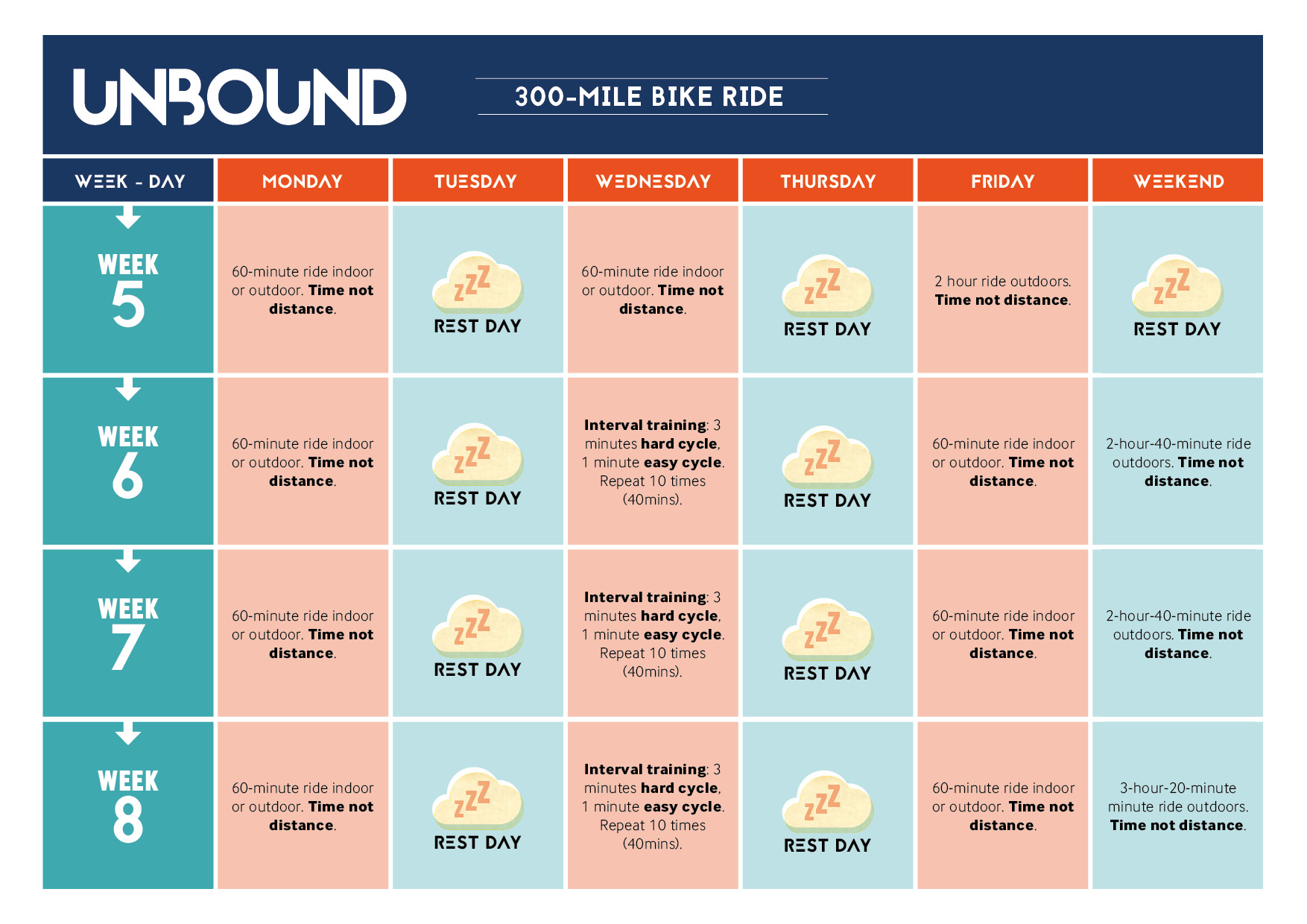300-Mile Bike Ride Training Plan
A 300-mile bike ride isn't for the faint-hearted, but our training plan will sail you across that finish line
“This type of event is a big commitment,” says leading strength and conditioning coach Jonny Jacobs, “and this is reflected in the training programme, which is going to eat into any flopping-out plans you have for the immediate future. It might seem too much, but if you want to enjoy the ride, rather than hating every painful, miserable minute of it, you’ll be glad you stuck with it.
“The plan builds up over 16 weeks, starting with 60-minute rides and increasing until you’re ready to cover more than five hours in the saddle in the final weeks. Don’t panic, though: although it ramps up the saddle time relatively quickly, there is only one long ride per week.”
Glossary of terms
Interval training
Repeatedly performing an activity at a high intensity, followed by the same activity at a lower intensity – sprinting then slow jogging, for example. For beginner’s advice on interval training for cyclists, see our handy guide here.
Easy cycle
This means cycling at a pace where you are just about able to hold a conversation without gasping.
Hard cycle
Explosive cycling, going as fast as you can. It can help if you imagine you’re being chased!
Time not distance
A drill focusing on the length of time you are in the saddle, rather than on a set distance you must ride.
Mind coaching
Use ‘chunking’
“Cycling is repetitive so it’s important to compartmentalise the event and not see it as a whole,” says top sports psychologist and trainer of astronauts, Julia Attias. “Use self-talk tactics such as, ‘All I’m doing is just cycling three more miles.’ Chances are, you’ll then think, ‘Hey, that wasn’t that bad, I can do another three…’”
If you can do 100 miles, you can do 300
“Your training will probably take you no further than 100 miles, which might seem odd given that this event is three times as long,” says Attias. “Don’t worry about this. There’s a reason Jonny hasn’t put extra distance in your training plan – it isn’t needed.
“If you can cycle 100 miles, you can cycle 300. Your body is physically capable of completing the event – you simply have to make sure your mind is in concurrence with that.”
Remember your motive
“Because this is a long event, it’s imperative you keep reminding yourself why you entered in the first place,” says Attias. “This motivation is what will sustain your concentration through the weeks of training and into the big day itself.”



